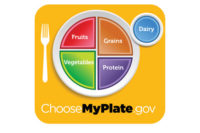Adding grain ingredients to create healthy snacks

A friend once told me that she wouldn’t be impressed by technology until she could download a snack. Although we are not quite at the level of the Jetsons, the snacking trend continues to grow.
On-the-go consumer lifestyles drive the need for food products that people can conveniently hold and eat as they move through their busy weeks—and that can hold them over between meals, or occasionally take the place of a traditional breakfast, lunch or dinnertime meal. And sometimes, people just need the lift of a sweet treat.
Much of the market today is driven by demand for healthy foods that are easy to hold and easy to eat, like snack bars, a category filled with products that offer significant nutrition (or at least a health halo). According to the May 2016 Mintel study, “Snack, Nutrition and Performance Bars—U.S.,” 57 percent of consumers purchase snack bars, and sales of snack bars have grown by 26 percent from 2010 to 2015. These bars come in all shapes and sizes—from cereal and grain snack bars, to nutrition bars, to athletic and weight-loss bars. Current data appears to indicate that weight-loss and athletic bars are struggling, while snack and nutrition bars are growing in popularity.
This is a trend the industry can rally around. Despite a high growth in snack bar sales, as noted in Mintel’s 2017 “Cereal, Snack & Energy Bars—Global Annual Review,” grains continue to be sidelined. While many snack bars contain grains, they aren’t enough to meet dietary needs.
Consumers know the benefits of incorporating more grains in general into their diet, and the majority of Americans are aware that you need whole grains for a balanced diet. According to a Food Marketing Institute survey, 50 percent of shoppers are looking to buy more whole grain foods. This is critically important, because less than 8 percent of the adults in the U.S. meet their whole grain intake recommendations (Nutrition Research, March 2014). Offering more grain-based snacks can help to fill that gap.
Why is it so important to eat grains? They provide invaluable nutrients that support overall health, including fiber, folic acid and iron, as well as vitamins A, B and C and E, not to mention the antioxidant grains bring to the diet. These key vitamins and minerals have a wide array of health benefits. For example, research has shown that fiber can help reduce the risk of heart disease and type 2 diabetes, lower blood cholesterol levels, regulate bowel movements, and help to create a feeling of fullness. But, according to USDA’s ongoing “What We Eat in America” study (National Health and Nutrition Examination Survey, 2007–2010), the overwhelming majority (95 percent) of Americans are not ingesting the recommended daily amount of fiber.
Even though whole grains tend to steal the show in this conversation, it’s important to recognize the importance of enriched and fortified grains, too. They are the largest contributors of folate in the American diet—more specifically, they are the primary sources of folic acid.
While the many benefits of grains is the main point of discussion here, it’s important to highlight their intersection with better-for-you snacking. According to Mintel, better-for-you snacks is a $1.1 billion dollar industry, and it’s still growing. Consumers are often driven away from healthy snacks, because flavor will drive their purchases more than healthy living or convenience. Better-for-you snacks face stiff competition. So creativity in product development will hold the keys to success of these options.
The 2000 Dietary Guidelines for Americans says it best: “Different foods contain different nutrients and other healthful substances. No single food can supply all the nutrients in the amounts you need.”
Nearly every U.S. adult snacks every day. Let’s put our best food forward and continue to offer more high-quality, tasty, healthy, grain-based snacks.
Looking for a reprint of this article?
From high-res PDFs to custom plaques, order your copy today!




